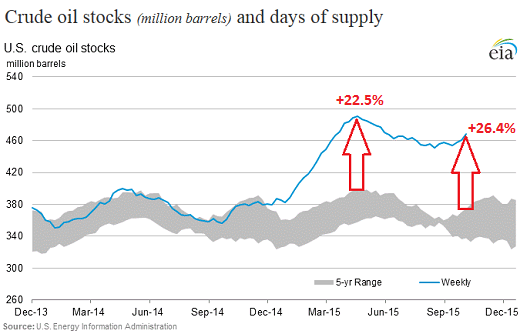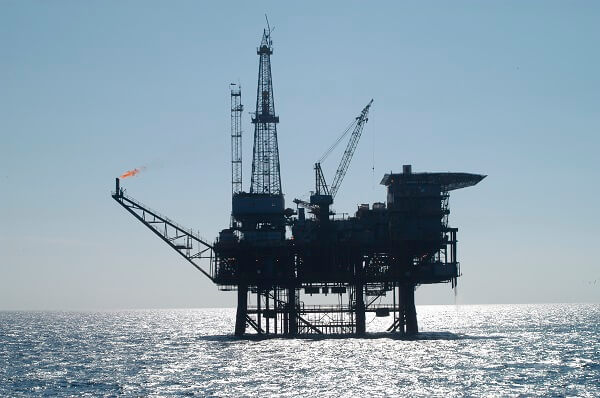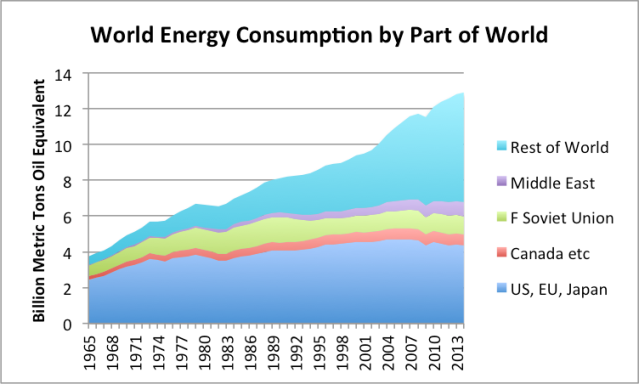In the US, oil storage is seasonal. A big buildup starting late fall gets Americans and their favorite gas or diesel sipping or guzzling toys or clunkers through “driving season” – late spring and summer – when somehow everyone has to drive somewhere. After driving season, petroleum stocks fall. This pattern has played out this year as well, but with a difference.
Last week, the EIA reported that crude oil stocks rose 7.6 million barrels to 468.6 million barrels, the highest for this time of the year since records have been kept. Crude oil stocks are now 98 million barrels higher than they were last year at this time, when they were already bouncing into the upper end of the 5-year range.
This chart from the EIA shows the out-of-whack relationship between the five-year range (gray area) and the weekly buildup (blue line) this time around:
Instead of getting better somehow, this situation simply got worse over driving season. At the peak of the buildup this year, crude oil stocks were 22.5% higher than a year earlier. Now they’re 26.4% higher than they were at this time last year.
If the inventory buildup this fall, winter, and spring continues in this manner from today’s much higher starting point, we can look forward to a fiasco on the storage front – and on the pricing front. Because at this rate, by April, we’ll be having oil coming out of our ears!
But this is a global issue for producers (or conversely, an opportunity for oil consumers). Here’s Saudi Arabia, which has been pumping oil at record levels to maintain its market share against Russia and the boys from the oil patch in the US and Canada: its inventories are ballooning too.
…click on the above link to read the rest of the article…













